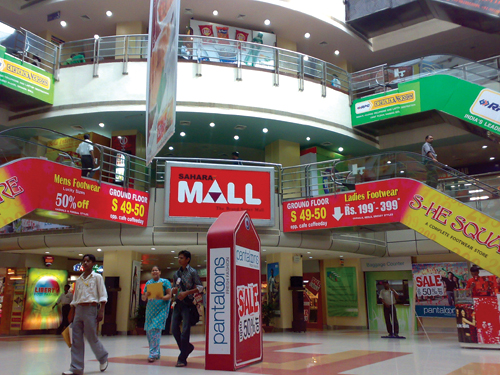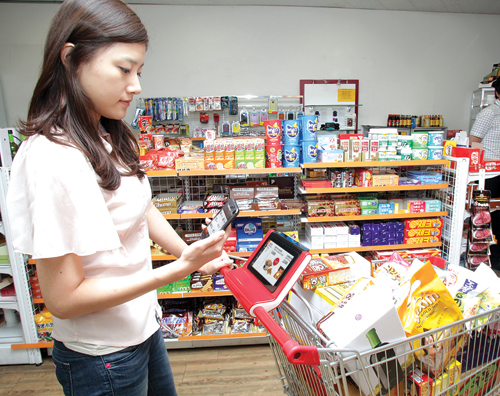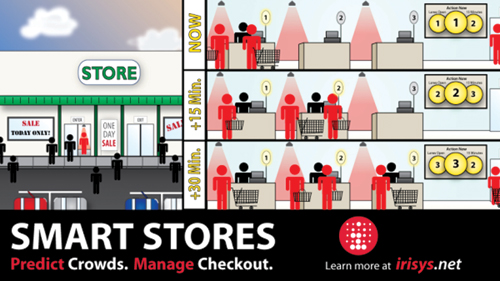
You are walking through a swanky shopping mall and you notice an interactive advertising wall with QR codes displaying several latest woollen jacket designs. It is beginning to get colder and you realise that you need a warm jacket. As you walk into your favourite apparel retail store, the thermal crowd management non-intrusive sensor installed at its entrance door detects your body heat, records your entry and adds you as a customer into the system.
You go to the shelf where the jackets are displayed and tell the store executive that you would like to try all the six designs. He notes down the product codes of the jackets and leads you to a high-tech mirror. The mirror’s parametric technology simulates your body type based on your weight, height and measurements and one by one shows how you would look in each jacket. After this, it simultaneously shows you all your pictures in each of the six jackets so that you can compare and finally decide which one to buy.
After paying for the jacket, you briefly stop at a music and movies store. The latest Bond film is available but you have not read its reviews yet. You decide to judge it for yourself. So you hold your mobile phone over the DVD’s bar code and the Bond flick’s trailer starts playing on your phone’s screen.
This is not a scene out of some sci-fi movie, but something you can look forward to experiencing in the near future.
New technologies such as augmented reality (AR), Near Field Communication (NFC), smart shopping devices and SixthSense technology are facilitating emergence of novel and highly interactive customer touchpoints. These technologies are developing at an astonishing pace, throwing complex challenges for retailers. While some touchpoints have been adopted, many are still in the pilot stage.
Smart shopping technology and devices
Smart carts. IBM, NCR, Fujitsu and Hewlett-Packard are developing smart shopping devices that are likely to be widely used in the near future. Work is underway on a supermarket smart cart that has a screen embedded in its handles. A shopper needs to swipe a smart card through a slot in the cart to trigger the device ‘on.’

The screen communicates with the customer, notifying him of various in-store offers and promotions. The cart keeps track of all the products kept in it, enabling quicker billing as the cart can communicate with the cash register. The customer’s purchase history is also maintained, which enables the cart to anticipate which direction the customer is likely to move in through the retail shop floor. Customised suggestions then begin to pop up on the screen, to help the shopper.
Thermal imaging. Thermal imaging cameras detect radiation in the infrared range of the electromagnetic spectrum (roughly 9000-14,000 nanometres or 9-14 µm) and generate images of that radiation, known as thermograms. All objects emit infrared radiation, which is above absolute zero, and the amount of radiation emitted by an object increases with temperature. Since the temperature of human beings is higher than most surrounding objects’, thermography allows detection and counting of humans. Array sensors detect heat sources in thermal imaging systems.
These systems usually use embedded technology and are placed at a height for precise results. As they detect the heat emitted from people, they are able to count well even in different intensities of lighting, and need not employ complex background removal algorithms unlike computer vision systems. This results in a more precise people count. However, the system may fail in cold weather when customers are wearing thick woollens.

People counters help collect information such as customer footfalls and the path taken by the customers in the store, helping to generate customer insights such as their reactions to in-store promotions and price changes, and linkages between footfalls and sales. This information ultimately helps in improving the store layout and quality of service.
SixthSense technology. Many of you would have seen that amazing video on TED, featuring Pranav Mistry’s SixthSense technology. It is in development stage at MIT Media Lab’s Fluid Interfaces Group and is “a wearable gestural interface that augments the physical world around us with digital information.” This technology will make the product shelves in retail malls come alive by providing interaction with product packages.
Generally, when shopping for a high-value product such as a laptop or a car, we are likely to refer to price and feature comparison websites. However, small ticket items such as toys and music CDs are more of impulse purchases and we usually do not have time to read product reviews before making the purchase.





